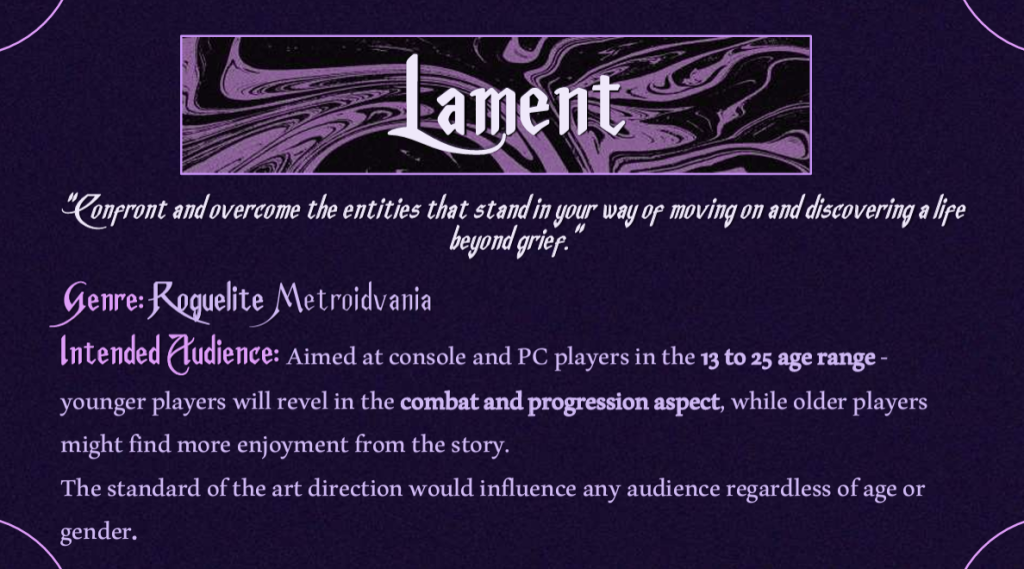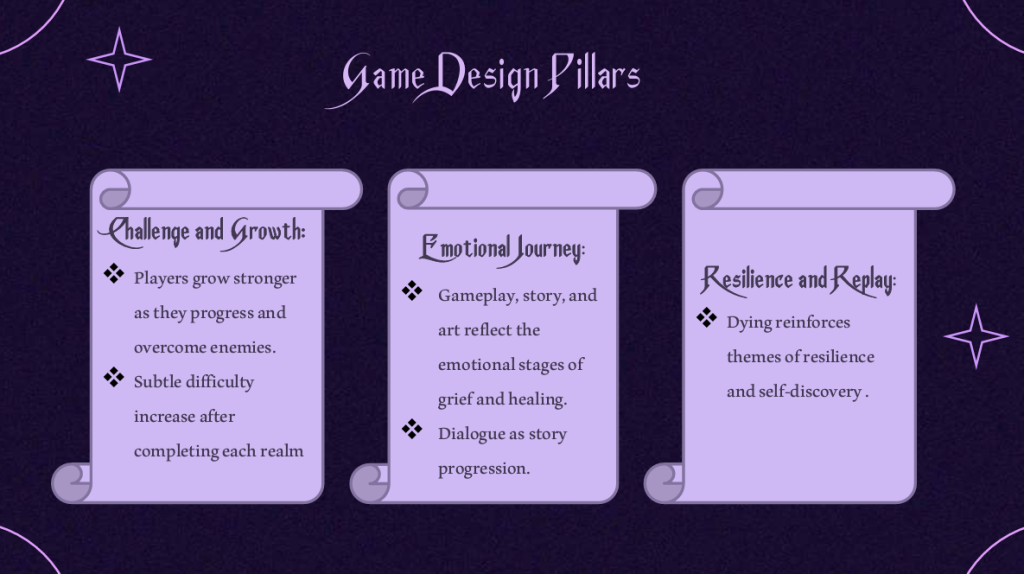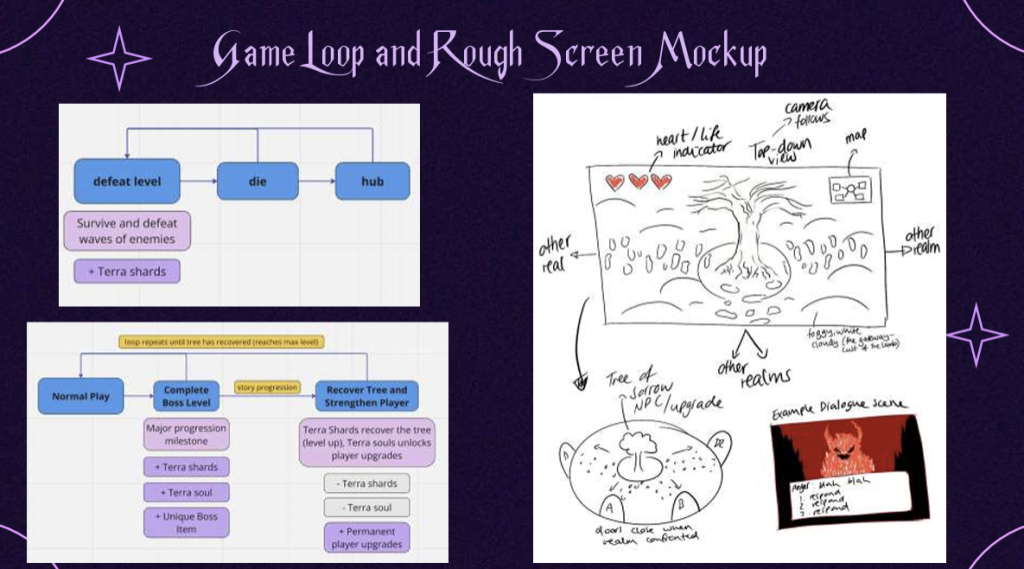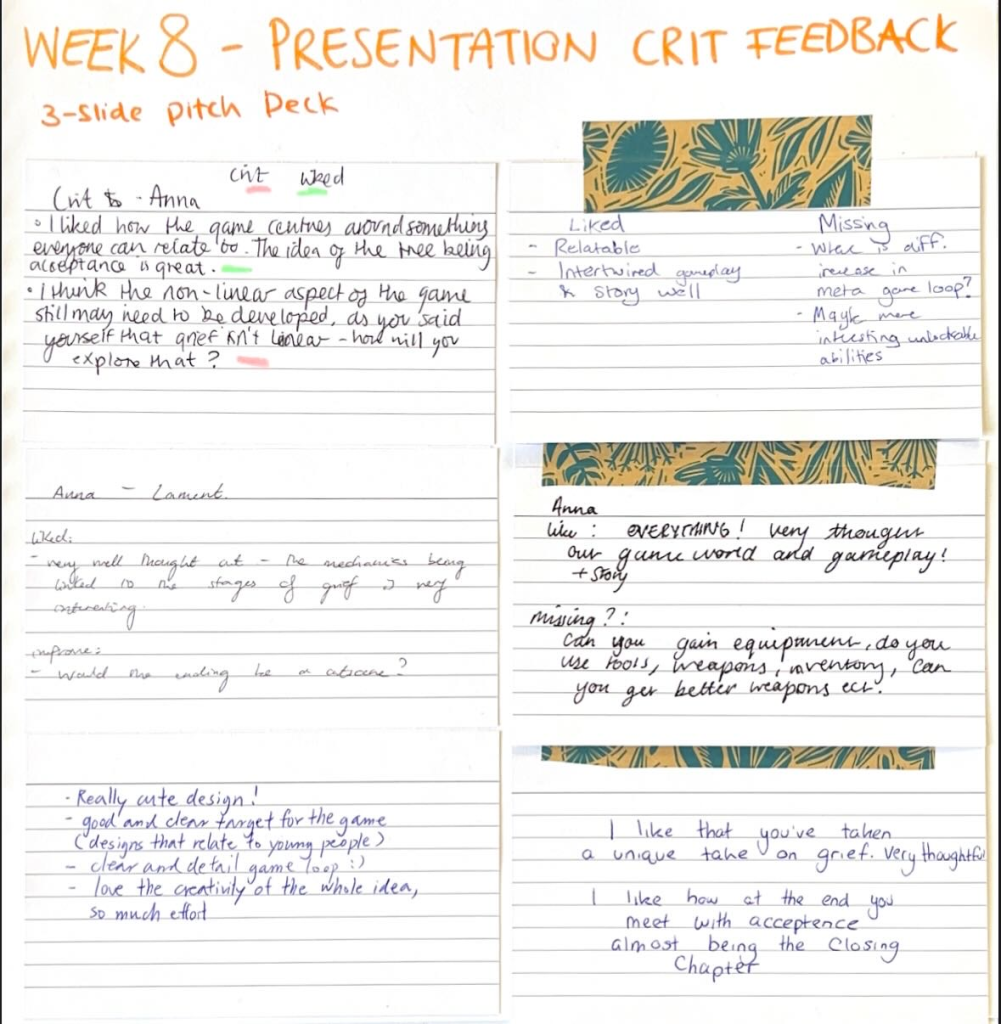Pitch Presentation
Coming back from formative feedback week we were asked to present a 3-slide pitch deck of our games to the class as part of a crit session. Classmates would listen in and provide positive feedback as well as suggestions for improvements, questions or additional ideas.



Essentially, the slides represented a one-page GDD and presented the most critical information in the shortest amount of time. Feedback was largely positive, here are some below

Game Audio
Our guest speaker this week was Game Sound Designer Jessica Saunder. Sound is one of the most crucial yet often underappreciated aspects of game design. It has the power to immerse players in the game world, provide critical feedback, and evoke emotional responses that enhance gameplay. Whether it’s the subtle rustling of leaves in a forest, the sharp clink of a coin being collected, or the dramatic crescendo of music during a boss fight, sound is integral to creating a compelling and memorable gaming experience. Without it, games would feel incomplete, leaving players less engaged.
Ambience and Environmental Sounds
Ambience and environmental sounds are essential for building atmosphere and setting the tone of the game world. These background sounds help to create a sense of place and realism, drawing players deeper into the game. For example, the distant chirping of birds, flowing water, and wind rustling through trees can make an open-world forest feel alive. Conversely, eerie creaks, whispers, and hollow echoes in a horror game can evoke tension and dread, keeping players on edge. Well-crafted ambient audio gives depth to the game’s setting, creating an emotional connection between the player and the virtual environment.
What to consider:
- location
- type
- when (era, time period)
- time (morning, night, afternoon)
- what (creatures, people, enemies)
- gameplay
- weather
Sound Design
Sound design goes beyond ambience to encompass every auditory element that is crafted to support gameplay. From the clash of swords and the roar of engines to the explosive thud of a grenade, sound effects are critical in giving feedback to player actions and events. High-quality sound design ensures that every action feels responsive and satisfying—whether it’s the crisp sound of reloading a weapon or the low rumble signaling an enemy’s approach. In multiplayer games, sound design often plays a strategic role; footsteps, reload sounds, or subtle environmental cues can alert players to nearby threats, adding layers of tension and strategy to the gameplay.
UI and Game Sound Feedback

Sound also plays a vital role in the user interface (UI), providing auditory cues that guide and inform players. UI sounds include clicks, beeps, and whooshes that confirm button presses, menu navigation, and other interactions. These sounds provide instant feedback, making the interface feel responsive and intuitive. For example, a satisfying “ding” can signal that a player has successfully selected an option, while a sharp error sound can indicate a failed action. Moreover, dynamic sound design can elevate the UI, such as the subtle hum of futuristic menus in a sci-fi game or cheerful jingles when unlocking new achievements in a casual game. These details may seem minor, but they contribute significantly to player satisfaction and usability.

In conclusion, sound in games is much more than just background noise—it’s a storytelling tool, a gameplay mechanic, and a bridge between the player and the game world. Whether it’s ambient audio that sets the stage, sound effects that enhance gameplay, or UI sounds that improve interactivity, the importance of sound design cannot be overstated. A well-designed soundscape enriches the overall experience, transforming a good game into a truly immersive one.
Leave a Reply